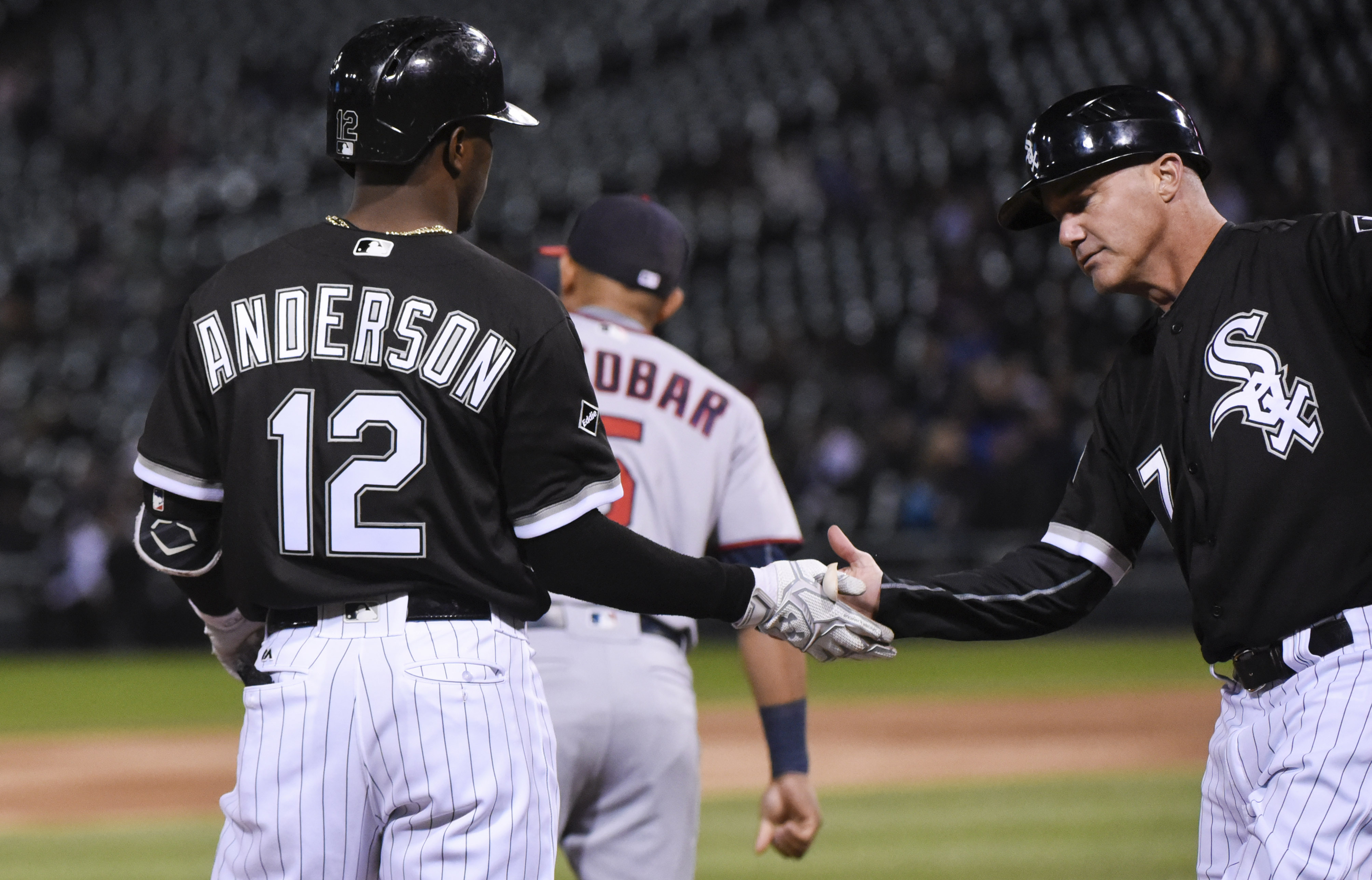It’s PECOTA release day at Baseball Prospectus, and with that comes our first peek at how the White Sox will fare in 2017.
It’s no secret that the White Sox aren’t expected to contend this season, but individual player projections are still important. For players like Tim Anderson and Carlos Rodon, we get a first look at how two young, important players for the team’s future are expected to perform in another key development year. For certain veterans, taking a leap or maintaining solid numbers will factor into whether the Sox will be able to move them and continue the rebuilding process, and if so, what they’d get in return.
The Young Guys
After Tim Anderson adjusted to major-league pitching much quicker than many expected a year ago, it would be easy to look at his PECOTA projections and feel disheartened. In 2016, Anderson hit .283/.306/.432 and posted a 1.3 WARP in 431 plate appearances, and while he may have been aided a bit by a .375 BABiP (his TAv was .248), the fact that PECOTA expects a similar season in his first full go-around of the majors can be taken as a positive as it means the system didn’t see much flukiness in his 2016 performance.
Anderson impressed after a call-up that reeked of desperation by the White Sox in a last-ditch effort at contention. While many thought he’d be better served spending all of ’16 in Triple-A, the promotion was well deserved. Hoping for more exciting projections is understandable, but keep in mind with Anderson (and everyone else) that this is their median expectation, and projections are conservative by nature. Whether Anderson continues to progress or the B/KK ratio hinders his progress, this seems a reasonable forecast.
Carlos Rodon showed signs of progress in 2016 but the White Sox are hopeful his best is yet to come. He cut down his walks considerably (2.9 BB/9 compared to 4.6 as a rookie) and saw a slight uptick in strikeouts (9.2 K/9 up from 9.0). He was obviously hampered by the White Sox receiving issues, which is at least part of the reason for his ERA jumping up to 4.04, and PECOTA expects continued improvement out of Rodon in his age-24 season, with his K/9 jumping again to 9.9, and both his ERA (3.99) and DRA (4.33) taking a dip. This adds up to a WAR increase up to 1.9, even with the BB/9 jumping back up slightly to 3.2.
One of my favorite parts of PECOTA projections is player comps, and Rodon’s top seasonal comparison is 2014 Madison Bumgarner. Expecting that type of season is quite bullish, but last year’s cFIP of 90 foresaw improvements, and PECOTA seems to agree.
The Trade Targets
PECOTA has Jose Quintana as the 16th best starting pitcher in the majors by WARP (tied with Cole Hamels and Yu Darvish). His strikeout and walk rates aren’t expected to change in any notable way, either. None of this is particularly noteworthy, but confidence that Quintana is able to continue to perform like a consistent, top of the rotation starter is certainly good news for his trade stock.
Players the White Sox will presumably look to offload in trades during the season are all veterans who are either at the end of, or already past their primes. Comparing the 2016 stats for Todd Frazier, Melky Cabrera, or Brett Lawrie with their 2017 PECOTA projections doesn’t reveal anything but minor variance for well-established major leaguers.
Even Miguel Gonzalez, who surprised most with a 3.73 ERA and 4.04 DRA in 2016 after four straight seasons in which he hovered around replacement level, isn’t projected to take a giant step back. While PECOTA gives him a significant ERA bump up to 4.49, his rate stats all are around the same as we saw last year.
The one exception to this rule seems to be with Jose Abreu, whom PECOTA projects to have his best season by WARP since his Rookie of the Year campaign in 2014. Many of the common stats, batting average, on-base percentage, strikeouts and walks, aren’t all that different, but after slugging a career-low .468 in 2016, his power number is projected at .495. Abreu recently turned 30 and there was speculation of him battling injuries a year ago. It’s likely his rookie season is the best we see of Abreu, but his ability to continue to provide value on the other side of 30 will be important for both his and the team’s future.
Projections are fun to keep us company as we wait for actual baseball to be played, and also serve an important purpose when we’re evaluating the progress of players as well as who is defying expectations, either for better or worse. And while the projections are less integral in determining the success or failure of a team like the one the Sox have built in 2017, having some semblance of an idea of what to anticipate — whether it be for the building blocks or the trade chips — helps set the scene for what we’ll see.
Lead Photo Credit: Matt Marton-USA TODAY Sports
